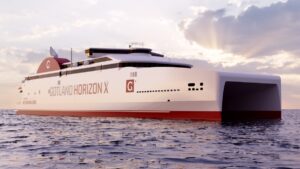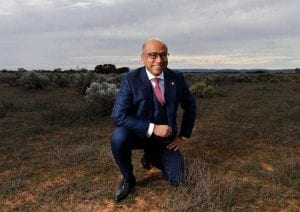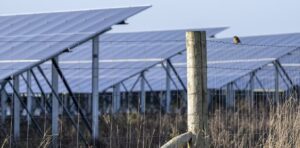Australia’s iron ore and coal producers could suffer badly if the industries move too slowly in the accelerating transition to green steel, in much the same way as big utilities have been caught out by the rapid switch to renewables.
A new analysis from BloombergNEF says global steel production could be largely decarbonized by 2050 through investments in hydrogen and increased recycling, and with only some US$278 billion (A$390 billion) in additional investment – just a fraction of the $172 trillion needed to decarbonize the global energy sector.
The production of steel is a heavy consumer of coal, and responsible for around 7 per cent of global greenhouse gas emissions. It had been considered a hard to abate sector, but the the emergence of cost-effective zero emissions hydrogen presents an opportunity to transition away from fossil fuels.
In its new report, Decarbonizing Steel: A Net-Zero Pathway, BloombergNEF predicts that by 2050, 31 per cent of the global market could be supplied by steel produced using hydrogen, with a further 45 per cent being made using recycled materials.
The remaining market, around 24 per cent of global steel supply, could come from existing coal furnaces paired with carbon capture and storage technologies, or those converted to operate with electricity.
BloombergNEF’s head of sustainable materials, Julia Attwood, said that established steelmakers should already be looking to transition away from the use of coal in steel-making, as such plants run the risk of becoming stranded assets.
“The steel industry cannot afford to wait for the 2040s to start its transition,” Attwood said.
“Today’s new plants are tomorrow’s retrofits. Commissioning natural gas-fired plants could set producers up to have some of the lowest-cost capacity by retrofitting them to burn hydrogen in the 2030s and 2040s.”
“But continuing to build new coal-fired plants will leave producers with only bad options toward a net-zero future by 2050.”
As a leading global supplier of both iron ore and coal for steel-making, the pivot towards green steel will have significant ramifications for the Australian resources sector, BloombergNEF says.
“The shift to green steel could cause both great disruption, and great opportunity, for Australia’s iron ore miners,” BloombergNEF’s head of industrial decarbonization, Kobad Bhavnagri, said.
“Numerous studies show that green hydrogen is emerging as both the cheapest and most practical way to make green steel. But this technology change poses a challenge for Australia. Not only will it virtually wipe out metallurgical coal exports, but iron ore exports could take a hit too, if miners don’t adapt.”
Bhavnagri said that Australian companies like BHP, Rio Tinto and Fortescue are producers of lower-grade iron ores, which are currently unsuitable for steel production using hydrogen.
Bhavnagri warned that Australia’s iron ore supplies would need to be upgraded, as they were at risk of being pushed out of the market by higher quality supplies from other countries.
Fortescue has already announced that it will prepare to establish itself as a leading supplier of hydrogen and green iron products, with chair Andrew Forrest using spin-off Fortescue Future Industries to invest in more sustainable production.
But both BHP and Rio Tinto have been comparatively slower in their moves into green steel production, although both have sought to divest themselves of their coal assets.
Bhavnagri warned that companies are already being caught off guard by the pace of the energy transition in other sectors – as evidenced by AGL Energy’s concession that they were caught off-guard by the speed of change in the Australian electricity market – and those anticipating a slower switch to green steel could lose out.
“Some miners seem to assume that this transition will happen slowly, or that the use of carbon capture on current steel-making technology will mean there is minimal need for change,” Bhavnagri said.
“That is a very risky assumption to make. Carbon capture technology is fundamentally more costly than using clean fuels like green hydrogen. The speed of change in clean technology has been wrong footing companies and investors that underestimate it.”
“Just look at utilities. Electric utilities that sat on their hands have had their business models and balance sheets upended by the pace of change in clean tech,” Bhavnagri added.
The pivot to green steel production will drive significantly increased demand for green hydrogen to replace the thermal coal traditionally used in steel production, providing additional opportunities for countries with access to high-quality renewable energy resources – like Australia – to establish themselves as leading suppliers of the zero emissions fuel.
“The global steel industry is poised to begin a titanic pivot from coal to hydrogen,” Bhavnagri said.
“Green hydrogen is both the cheapest and most practical way to make green steel, once recycling levels are ramped up. This transition will cause both great disruption and great opportunity. Companies and investors don’t yet appreciate the scale of the changes ahead.”
“Shift to hydrogen could also be an opportunity for Australia to capture more of the value chain in steel, by not only upgrading iron ore onshore, but potentially doing the hydrogen-intensive part of steel making domestically too,” Bhavnagri added.
Lies, myths and greenwashing. Good independent journalism is time-consuming and costly. But small independent media sites like RenewEconomy have been excluded from the tens of millions of dollars being handed out to big media companies from the social media giants. To enable us to continue to hold government and business to account, to cut through the lies and the misinformation about the renewable transition, and to help expand our work, you can make a voluntary donation here to help ensure we can continue to offer the service free of charge and to as wide an audience as possible. Thank you for your support.









